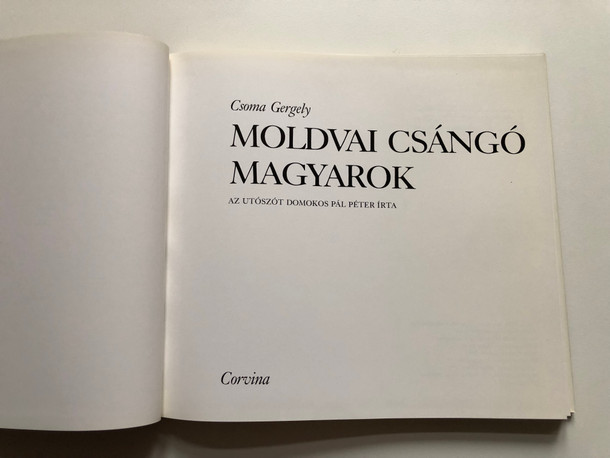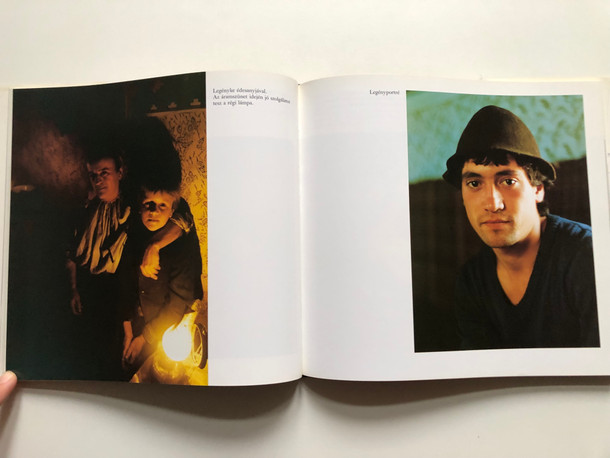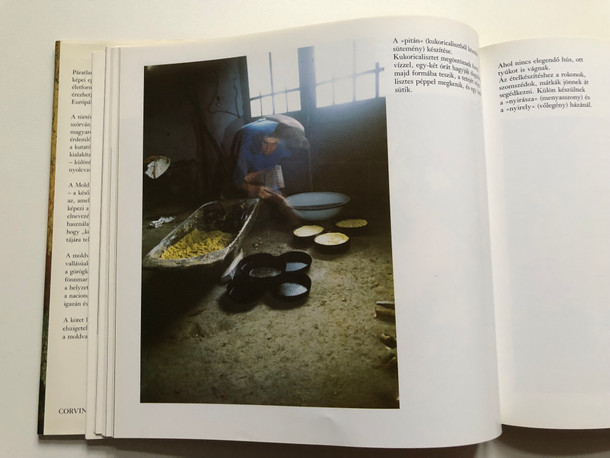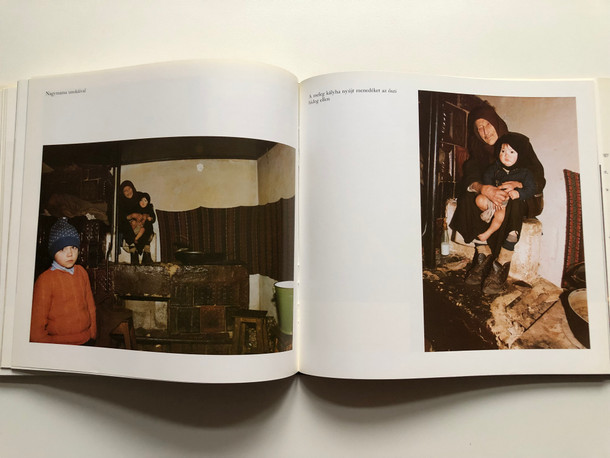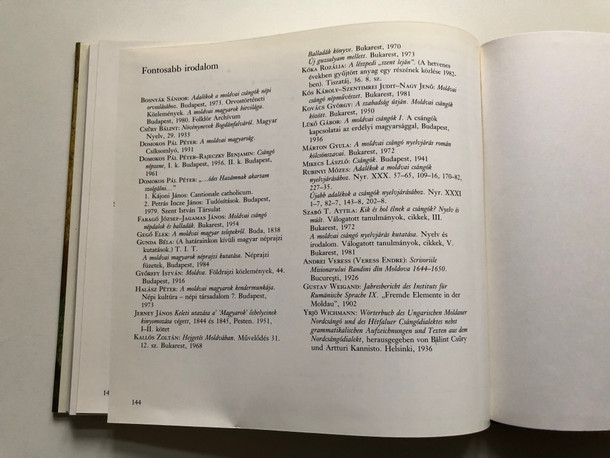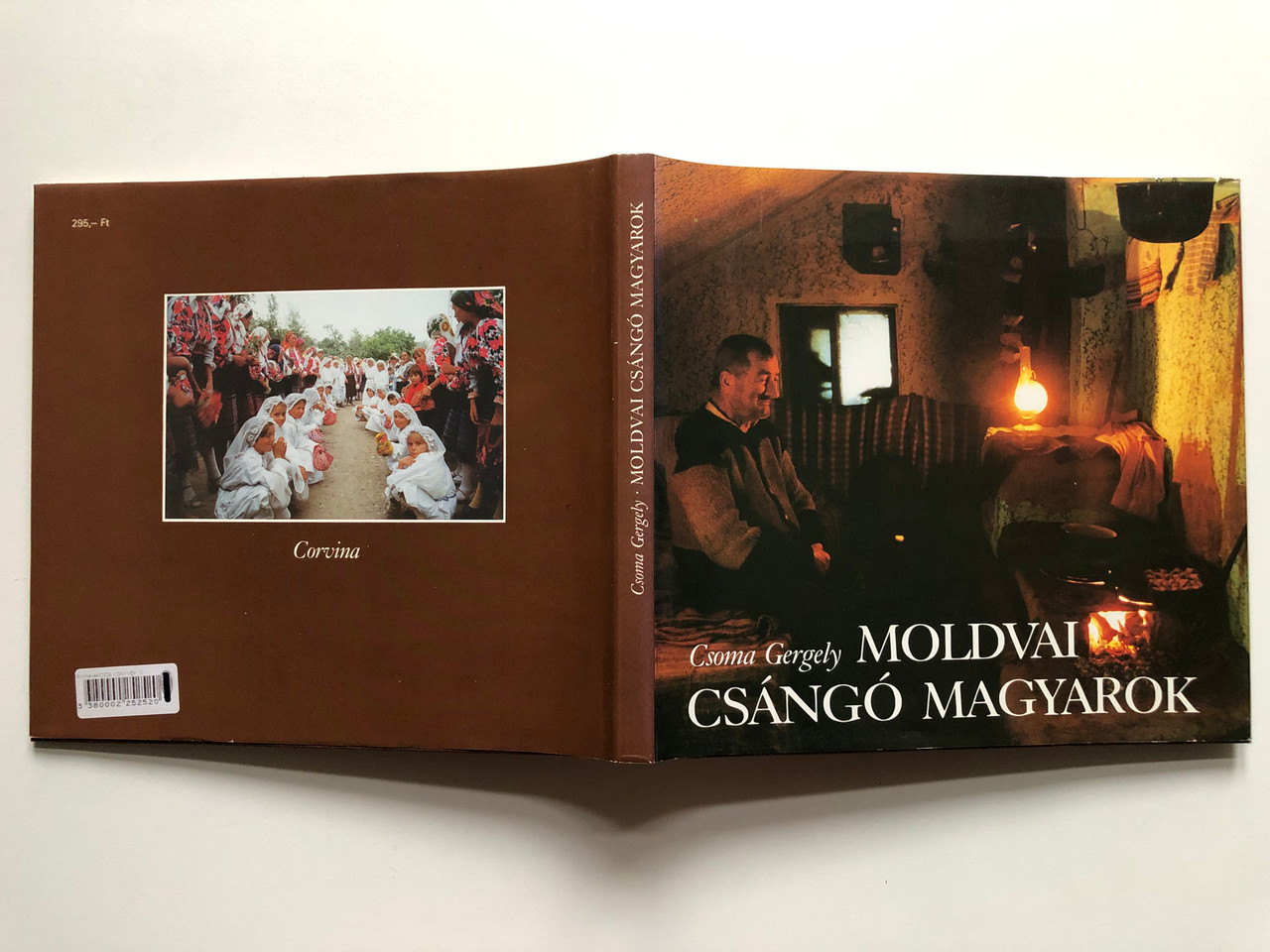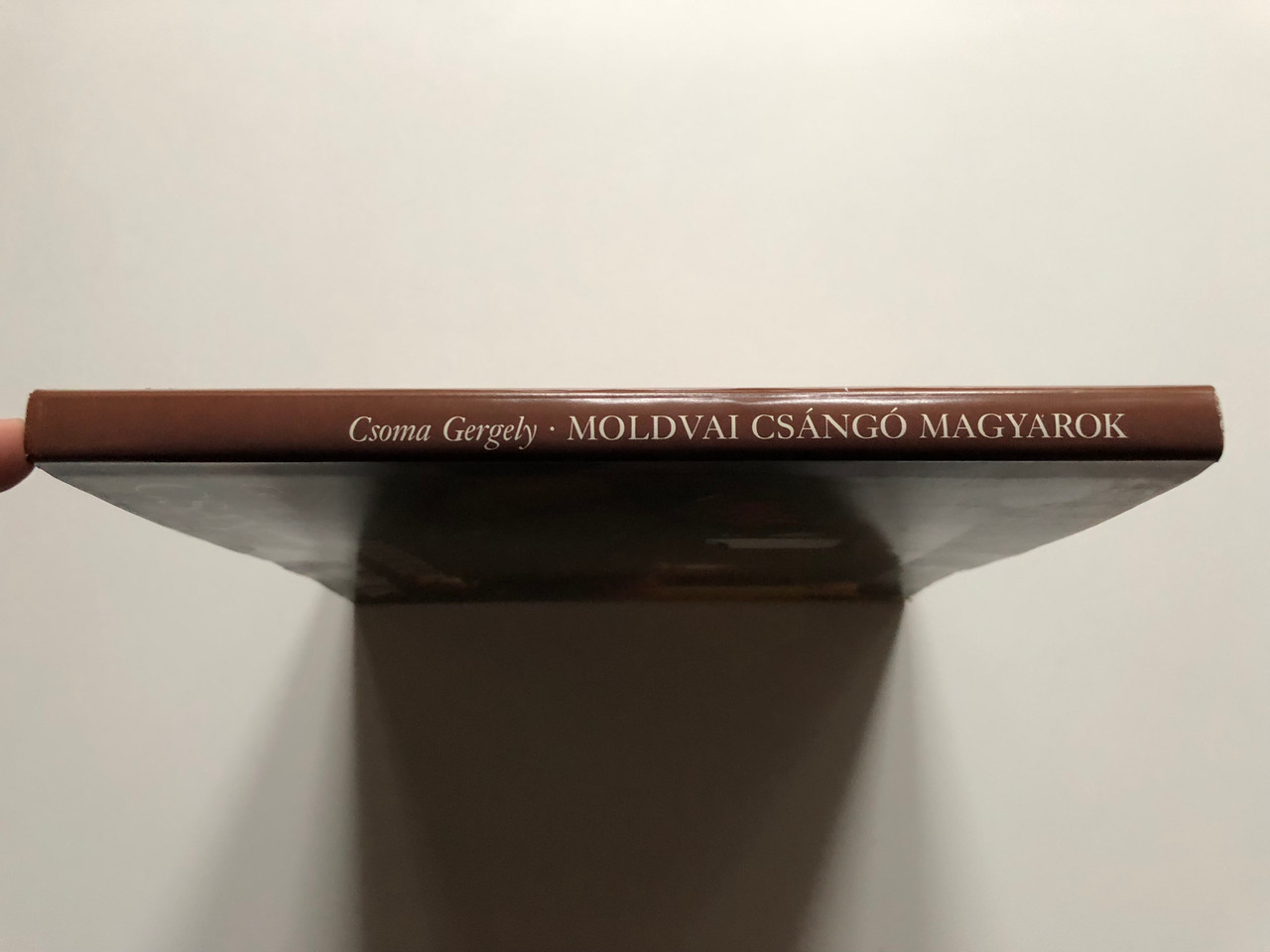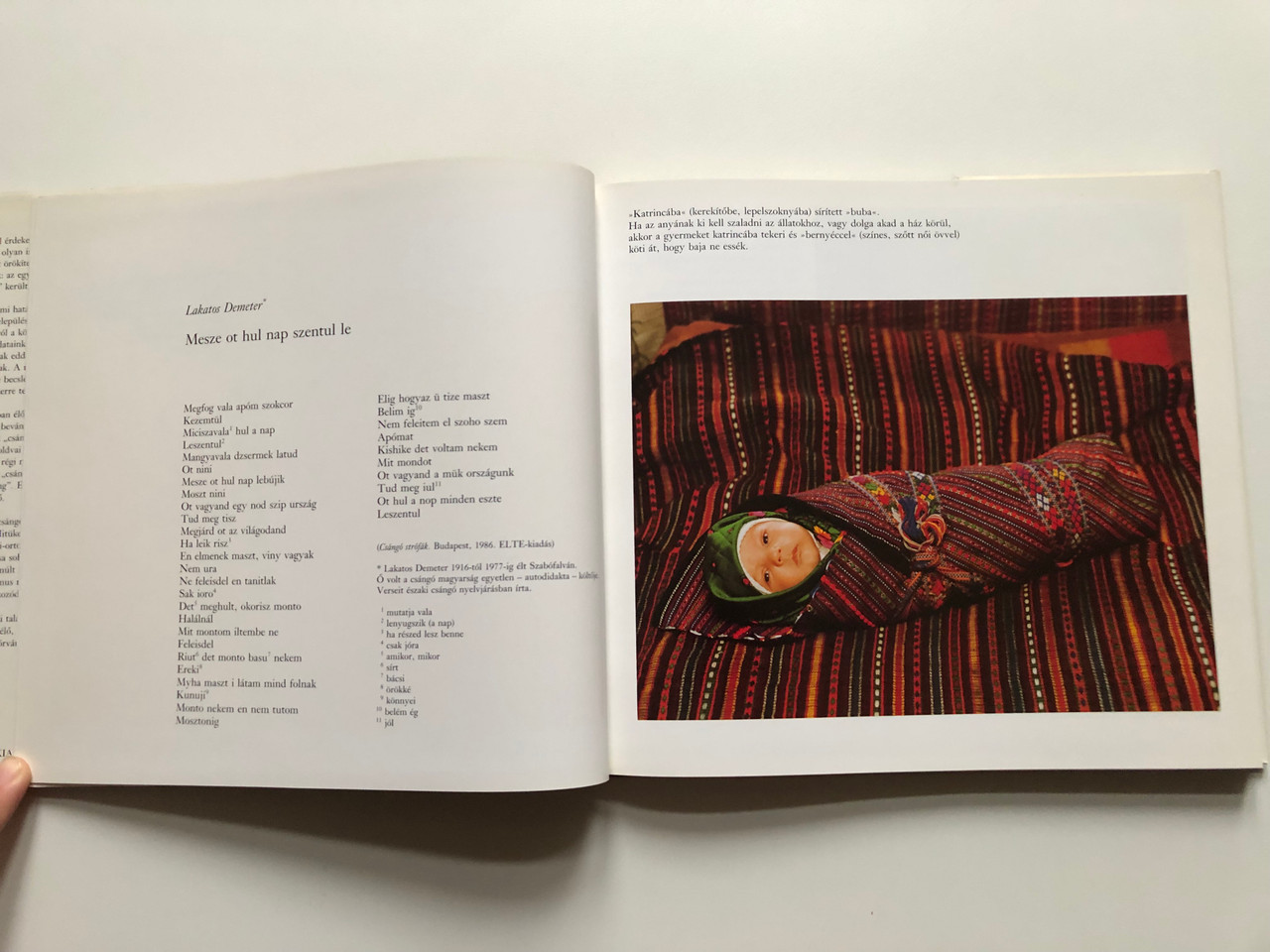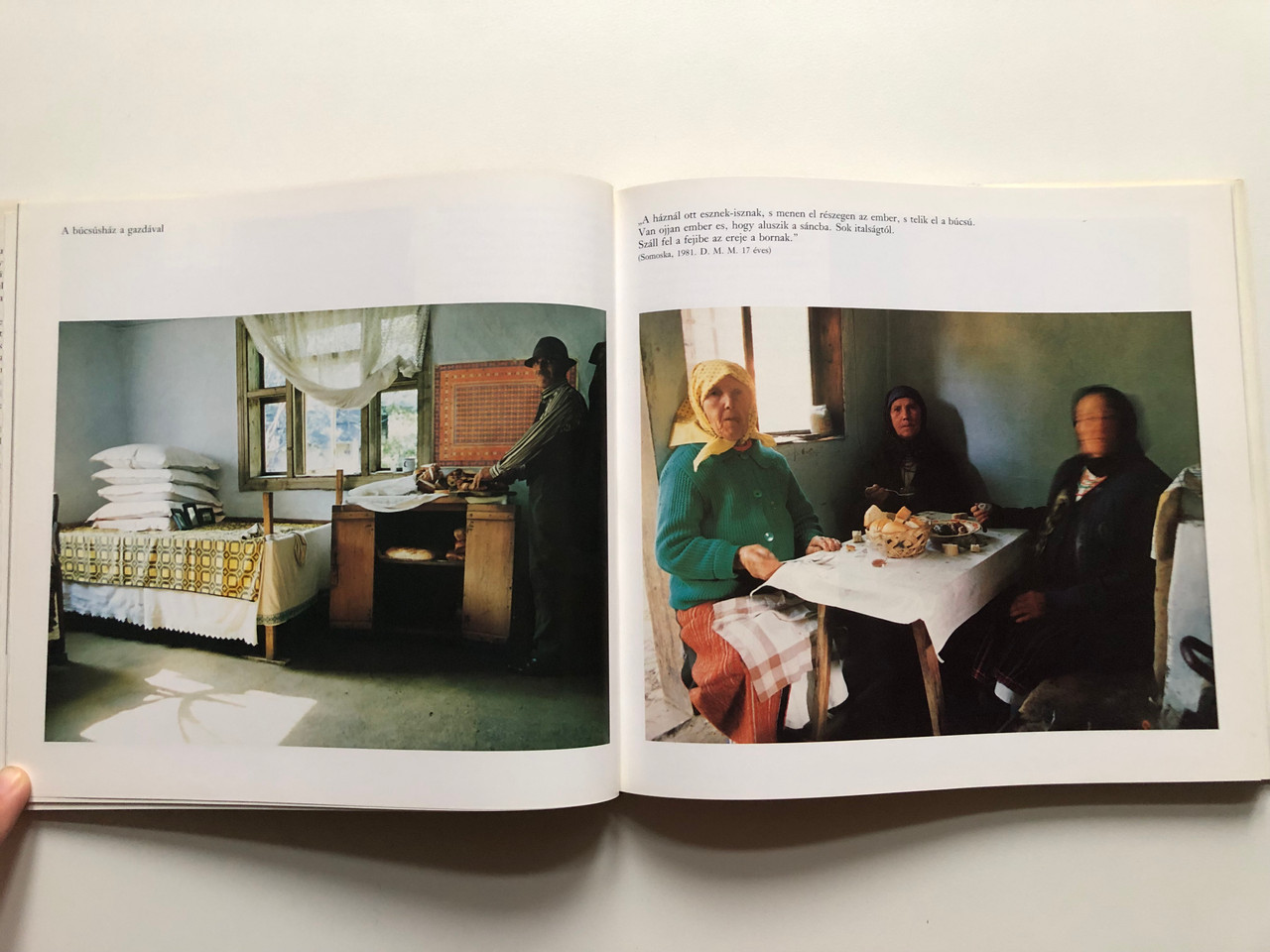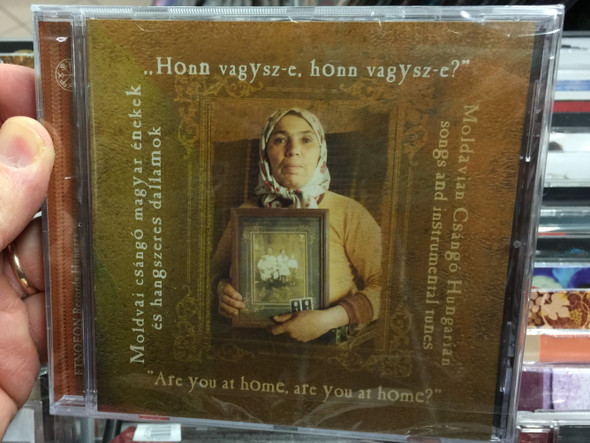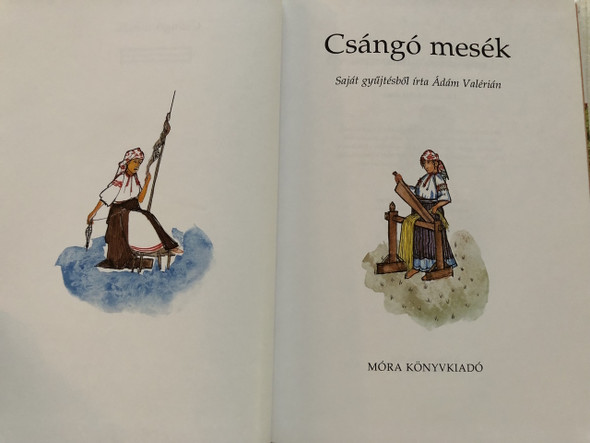Description
Csoma Gergely: Moldvai csángó magyarok / Csángó Hungarians from Moldova / Hardcover
ISBN: 9631325865
Printed in Hungary
Pages 144
Language: Hungarian
Features:
- Méret: 24 x 22 cm
- Kiadó: Corvina Kiadó
- Oldalak száma: 144
- Nyelv: MAGYAR
- Kiadás éve: 1988
- Size: 24 x 22 cm
- Cover: HARD BOARD, PROTECTIVE COVER
- ISBN: 9631325865
- Language: Hungarian
- Year of publication: 1988
- Illustration with color pictures
Summary:
The reader holds an incomparably interesting volume in his hands: his pictures capture such an unknown and traditional way of life that we can feel that we have returned to the "village Europe" of a century or two ago.
The oldest scattered Hungarian settlement outside the historical borders was established in Moldavia. We have credible information about the Hungarians living there since the Middle Ages, but researchers have so far failed to form a unified position on the question of their origin. According to various estimates, the number of people who still speak Hungarian today can be put at eighty thousand.
One group of Hungarians living in Moldavia - in addition to the Szeklers who immigrated later - is the one that declares itself to be "Csángo": this layer forms the ancient core of Hungarians in Moldavia. The name "csángó" is a derivative of the old Hungarian verb "csáng", which means "to circle". Its first appearance dates back to the 1400s.
The Csangó Hungarians in Moldavia are Roman Catholic. They preserved their faith for centuries in the Eastern Greek Orthodox environment. The survival of their culture was never without conflict, but the situation became truly and increasingly oppressive from the second half of the last century, due to the large-scale advance of nationalism.
The images in the volume are perhaps the last time to capture the values of the culture of an isolated ethnic group that is on the verge of disappearing, the scattered Hungarians of Moldavia.
Összegzés:
Páratlan érdekes kötetet tart kezében az olvasó: képei egy olyan ismeretlen és hagyományos életformát örökítenek meg, amelynek láttán úgy érezhetjük: az egy-két évszázaddal korábbi "falusi Európába" kerültünk vissza.
A történelmi határokon kívül eső legrégebbi magyar szórványtelepülés Moldvában jött létre. Ott élő magyarokról a középkortól fogva vannak hitelt érdemlő adataink, de eredetük kérdésében a kutatóknak eddig nem sikerült egységes álláspontot kialakítaniuk. A még magyarul beszélők száma - különféle becslések alapján - napjainkban nyolcvanezerre tehető.
A Moldvában élő magyarok egyik csoportja - a később bevándorolt székelyek mellett - az, amelyik "csángónak" vallja magát: ez a réteg képezi a moldvai magyarság ősi magját. A "csángó" elnevezés a régi magyar nyelvben egykoron használatos "csáng" ige származéka, ami annyit tesz, hogy "kereng". Első előfordulása az 1400-as évek tájára tehető.
A moldvai csángó magyarok római katolikus vallásúak. Hitüket évszázadokon át őrizték a görögkeleti-ortodox környezetben. Kultúrájuk fönnmaradása soha nem volt konfliktusmentes, de a helyzet a múlt század második felétől, a nacionalizmus nagyarányú előretörése révén vált igazán és fokozódó mértékben nyomasztóvá.
A kötet képei talán utoljára örökítik meg egy elszigetelten élő, eltűnőfélben lévő népcsoport, a moldvai szórványmagyarság kultúrájának értékeit.



